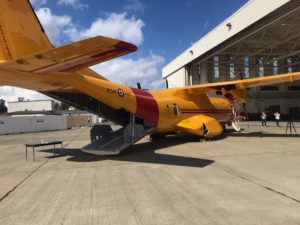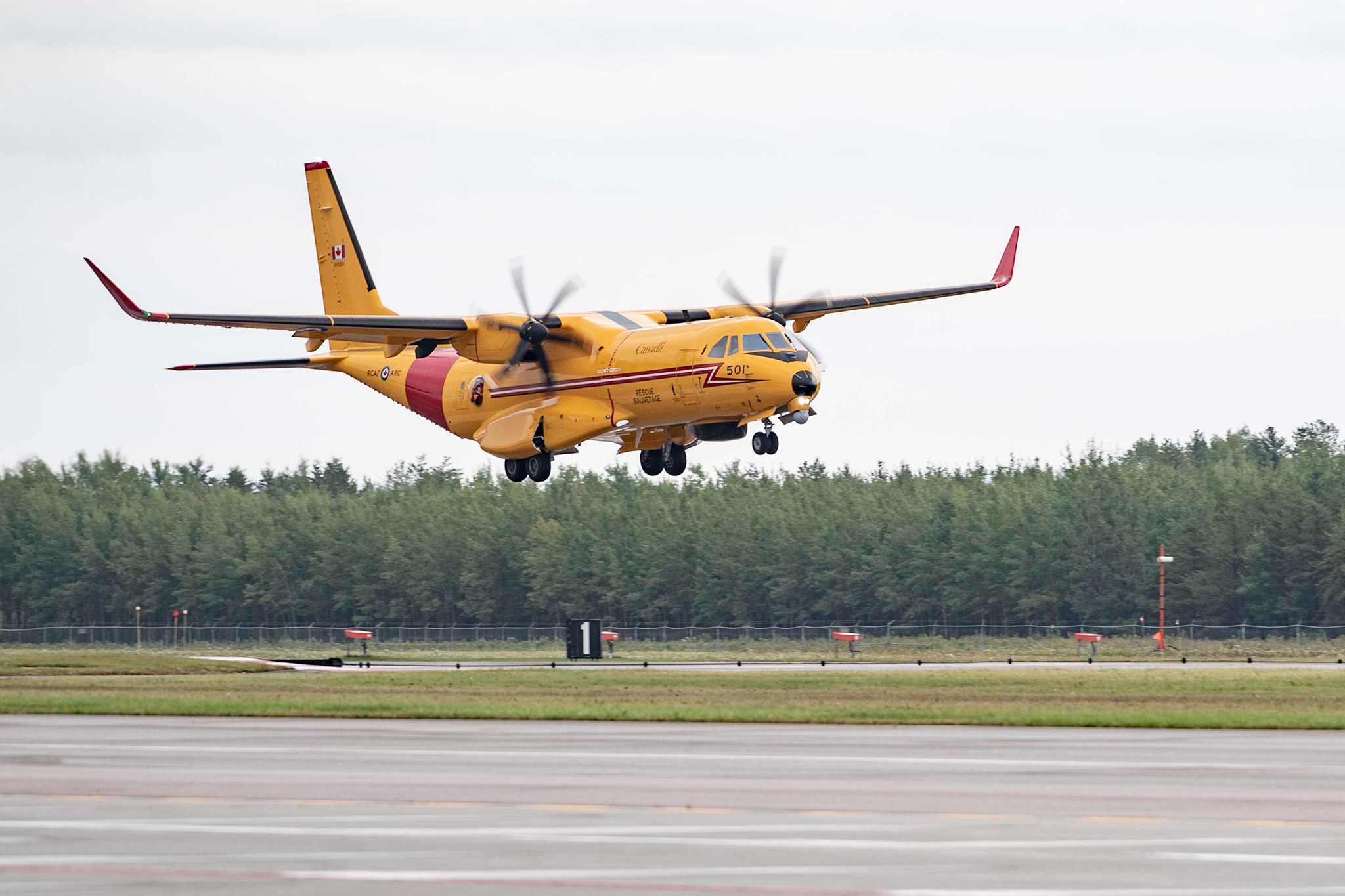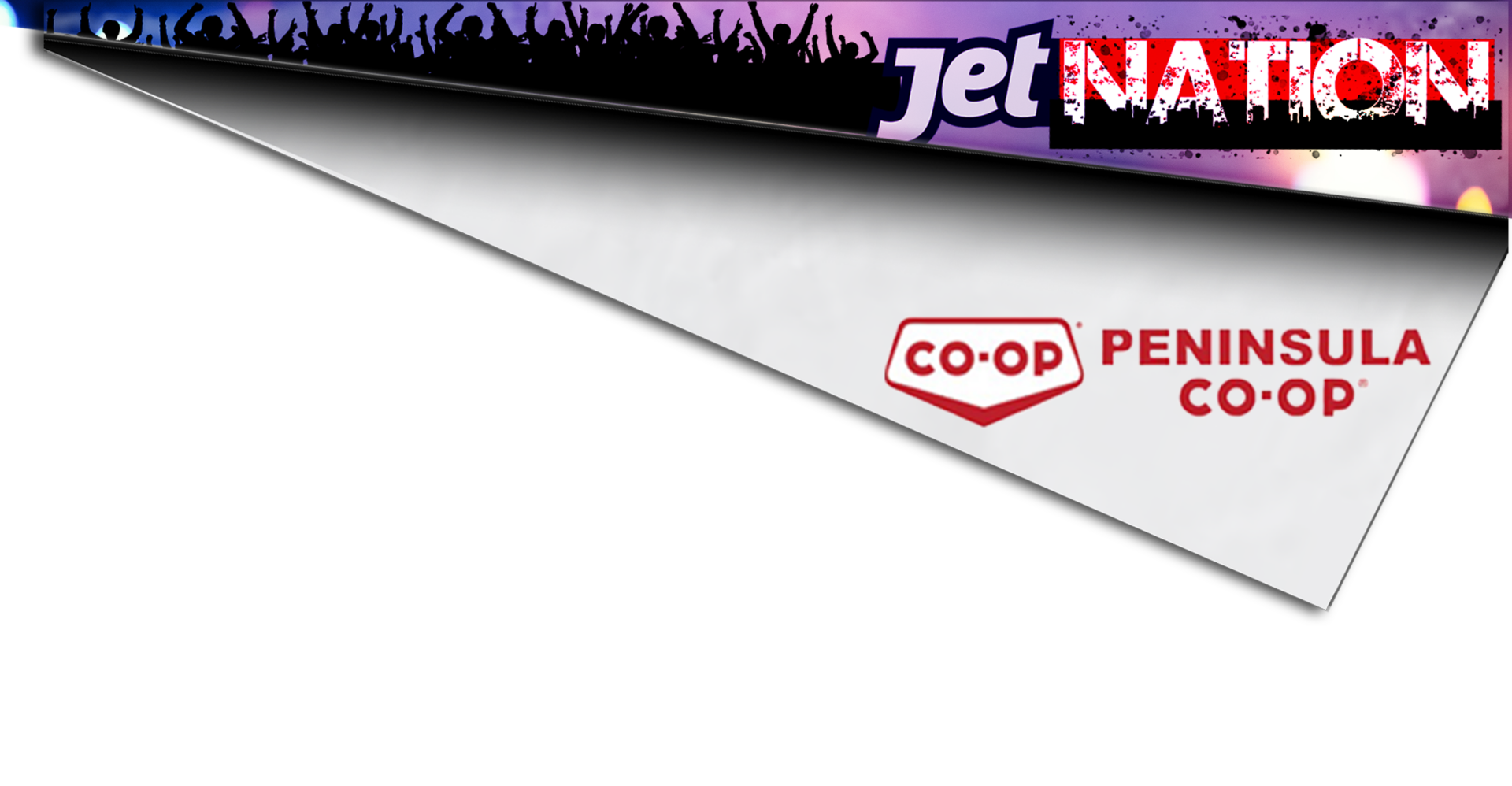Search and Rescue teams that cover Vancouver Island and the West Coast have an historic new addition to the fleet.
You may know that the Air Force base at 19 Wing Comox uses helicopters to pluck stranded hikers from the forest, and boaters from the ocean.
The crew is also known for its big, yellow “Buffalo” fixed wing aircraft.
Today, the CC-295 arrived.

It’s the first of 16 new Kingfisher aircraft coming to the Royal Canadian Air Force’s search and rescue fleet.
Defence minister Harjit Sajjan was at the base today to welcome the new addition.
“As outlined in Canada’s defence policy, Strong, Secure, Engaged, it is essential that our search and rescue crews have the modern and effective aircraft they need to carry out this critical work,” Sajjan said.
“I am thrilled at the arrival of this first CC-295 Kingfisher in Comox as it represents another successful milestone for this project, while also supporting our mission of being strong at home.”
Specifically designed to perform search and rescue missions across Canada, the aircraft is equipped with integrated sensors that will allow crews to locate persons or objects from more than 40 kilometers away, even in low-light conditions.
Its communications systems will increase interoperability with other search and rescue assets, such as the CH-149 Cormorant.
The fleet of 16 aircraft will be replacing the CC-115 Buffalo and CC-130H Hercules fleets in their search and rescue role at four locations across Canada, and represents a value of $2.4 billion.
The aircraft received earlier this month will remain at 19 Wing Comox while the RCAF completes aircrew training, followed by operational testing.
During the transition period and while the CC-295 Kingfisher is being operationalized, fixed-wing search and rescue services will continue through existing fleets, along with the CH-149 Cormorant and CH-146 Griffon helicopters.
Part of this project includes the construction of a new training centre, which is being built in Comox by Canadian training leader CAE. It includes ten classrooms, as well as sophisticated training devices such as a full-flight simulator, a cockpit procedures trainer, a sensor station simulator, and an aircraft maintenance trainer. The centre will be used to train both maintenance and aircrews.
About 442 Squadron
The 442 Search and Rescue Squadron at 19 Wing Comox provides air support for the Joint Rescue Coordination Center (JRCC) Victoria.
This region consists of approximately 920,000 square kilometers of mainly mountainous terrain of Yukon and British Columbia and 560,000 square kilometers of the Pacific Ocean extending to approximately 600 nautical miles offshore, including over 27,000 kilometers of rugged British Columbia coastline.
The rugged and often inaccessible terrain, severe weather, and large expanses of sparsely populated areas make the Victoria SRR the most demanding region in the country.
Quick Facts
- A $2.4 billion contract (including taxes) for 16 new CC-295 fixed-wing search and rescue aircraft to replace Canada’s fleets of Buffalo and Hercules H aircraft was awarded to Airbus Defence and Space on Dec. 1st, 2016. The contract is for a period of 11 years, with the option to extend up to an additional 15 years of in-service support.
- This first aircraft, tail number 501, was formally accepted by Canada in Spain on Dec. 18th, 2019, and has now been delivered to Comox following additional testing and evaluations.
- A maintenance trainer aircraft arrived at 19 Wing Comox this past February. This aircraft was disassembled upon arrival, and reassembled inside the new training centre.
- The CC-295 Kingfisher will be based in Comox, Trenton, Greenwood, and Winnipeg. The aircraft will arrive in phases as crews are trained in turn at each location.
- Canadian company AirPro will provide day-to-day management of all in-service support for the provision of engineering, logistics, maintenance, training, IT systems, infrastructure and materiel support throughout the contracted CC-295 life cycle.
- Canada’s Industrial and Technological Benefits (ITB) Policy applies to this contract, ensuring that Airbus Defence and Space invests an amount equal to the value of the contract in the Canadian economy. Jobs have been and will continue to be generated from this contract with Canadian companies such as PAL Aerospace, Pratt and Whitney Canada, CAE, and AirPro.






